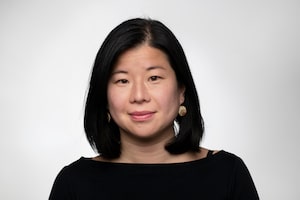
Unlike the U.S., with its many large private clinics and hospitals that provide complex treatments, a lot of high-tech care in Canada is only available at academic health sciences centres, which are partnerships between teaching hospitals and medical schools, says Stephen Archer, head of the department of medicine at Queen’s University.Getty Images/iStockphoto
They’re the health professionals performing some of the most complex procedures in the country. They’re training our future doctors. They’re advancing medical research. And they’re burning out.
Many academic physicians were already experiencing a state of emotional, mental or physical exhaustion before the pandemic. But as Canadian surveys conducted over the past few years have shown, burnout among this population of health professionals skyrocketed during the early waves of COVID-19. And some fear it will have lasting consequences for health care in this country.
“As part of the features of burnout, you stop caring and performance deteriorates and you’re just not engaged,” said Stephanie Garner, a clinical assistant professor in the division of rheumatology at the University of Calgary. This can diminish the quality of training that medical residents receive and lead to medical errors, she explained: “That is going to have implications for years.”
The effect on academic health sciences centres across the country could also be particularly detrimental.
Unlike the U.S., with its many large private clinics and hospitals that provide complex treatments, a lot of high-tech care in Canada – including advanced surgeries such as heart transplants – is only available at academic health sciences centres, which are partnerships between teaching hospitals and medical schools, said Stephen Archer, head of the department of medicine at Queen’s University.
“So every hospital is important, home care is important, family medicine is important. But academic health sciences centres sort of hold the keys to all the high-tech medicine that we do, by and large,” Dr. Archer said. “And so if they go down or if they’re impaired, so goes the system.”
Besides clinical care, the teaching and research that academic physicians undertake, including research to find new treatments and cures, may suffer when they are burnt out, said Edward Spilg, a geriatrician, assistant professor and research chair in physician wellness at University of Ottawa’s department of medicine.
“Clinical practice helps patients today, but education and research is what helps patients tomorrow,” Dr. Spilg said.
In a study published in the Canadian Journal of General Internal Medicine in June, Dr. Garner and colleagues at McMaster University found three out of four academic physicians and non-physician faculty members at the school’s department of medicine reported burnout when surveyed in early 2021. Females and those in their early careers were disproportionally burnt out.
The findings echoed those of another study, published in the journal BMJ Open in May, 2021, which found 68 per cent of surveyed University of British Columbia physicians at two academic hospitals were burnt out. More than 20 per cent said they were considering quitting the profession or had quit a position. As with the McMaster study, more women were burnt out than men.
As an early career faculty member and mother of three young children, Dr. Garner said she could relate. Trying to juggle teaching, research, clinical care and one’s personal life was hard enough before the pandemic. But trying to navigate patients through an unpredictable, unreliable and sometimes inaccessible health system – owing to COVID-19 closings of clinics and surgical delays – made the job all the harder, she said. So, too, did school closings, lack of child care, isolation and the fear of bringing COVID-19 home.
During earlier waves, in-person opportunities to collaborate and seek advice from colleagues on complex cases, which are critical for a positive work environment, also disappeared, as health visits moved online, Dr. Garner said.
Now that the country has exited the acute phase of the pandemic, some of these challenges and pressures have subsided. But in other ways, things have only gotten worse, Dr. Archer said. Patient volumes are high, compounded by an extraordinary surge of sick children this respiratory virus season. Nursing staff is depleted and demoralized, and academic physicians, who are often sought for to comment in the news media on how to keep people safe, are increasingly subject to abuse from the public, he said. All this contributes to physicians’ moral distress, he added, noting that mental health is now the No. 1 reason for sick leaves in his department.
Another issue is that while academic physicians strived to meet the overwhelming needs in clinical practice, their teaching and research often took a back seat. And as certain labs were closed and non-COVID-19 clinical trials were halted, many experienced setbacks that are not easy to recover from.
Sonia Anand, senior author of the McMaster study and professor of medicine and epidemiology at McMaster, said she is concerned that these setbacks and the high rates of burnout in women and early career faculty may lead them to give up their research and educational aspirations.
This is particularly worrisome since even though many women enter academic medicine, few of them end up in senior positions, a problem that has persisted for decades and is known as the “leaky pipeline,” said Nadia Khan, lead author of the UBC study and professor of general internal medicine. If burnout drives more women to drop out of academia, that could exacerbate gender gaps and lead to less diverse research, she said.
Too often, proposed solutions come in the form of personal advice, such as getting more sleep, but these don’t actually address the problem, Dr. Khan said. Rather, the biggest issues are the organizational and systemic ones, such as a deluge of administrative tasks and high patient volumes, that get in the way of physicians spending time caring for patients.
“They’re harder to address, but without addressing them, we really can’t get to the to the heart of burnout,” she said.
 Wency Leung
Wency Leung